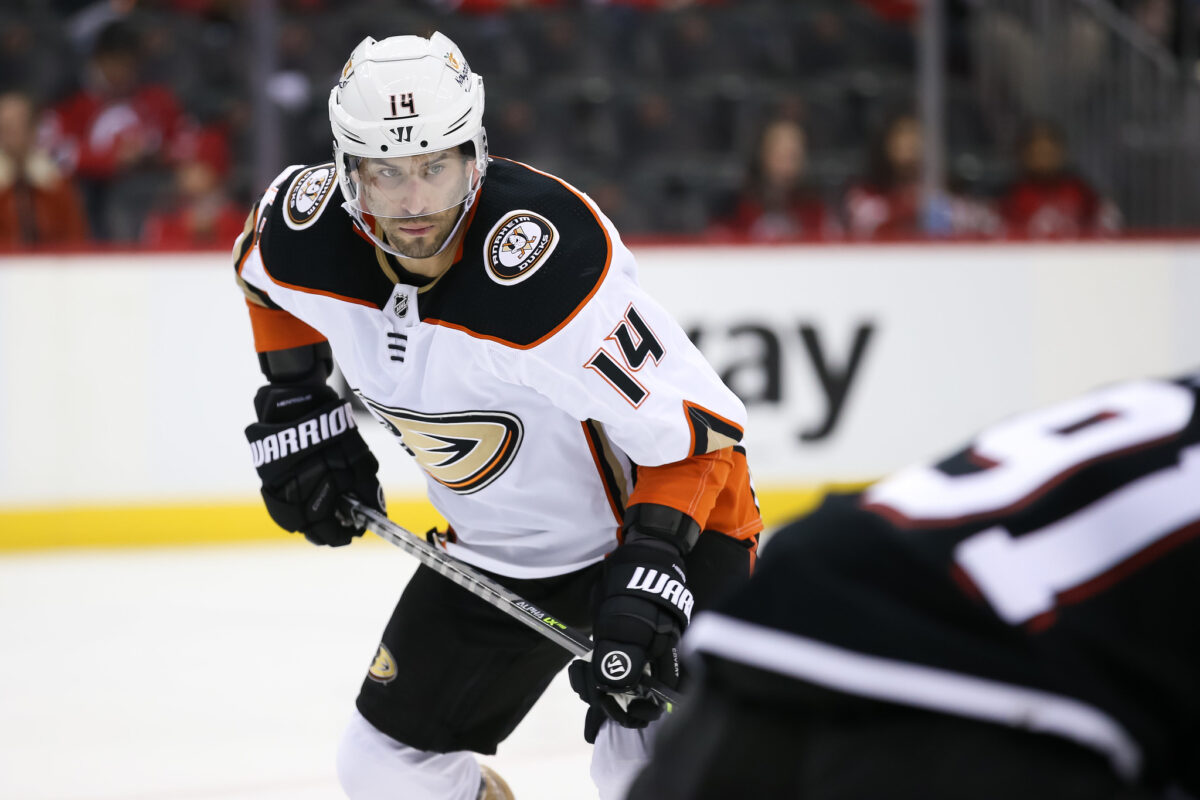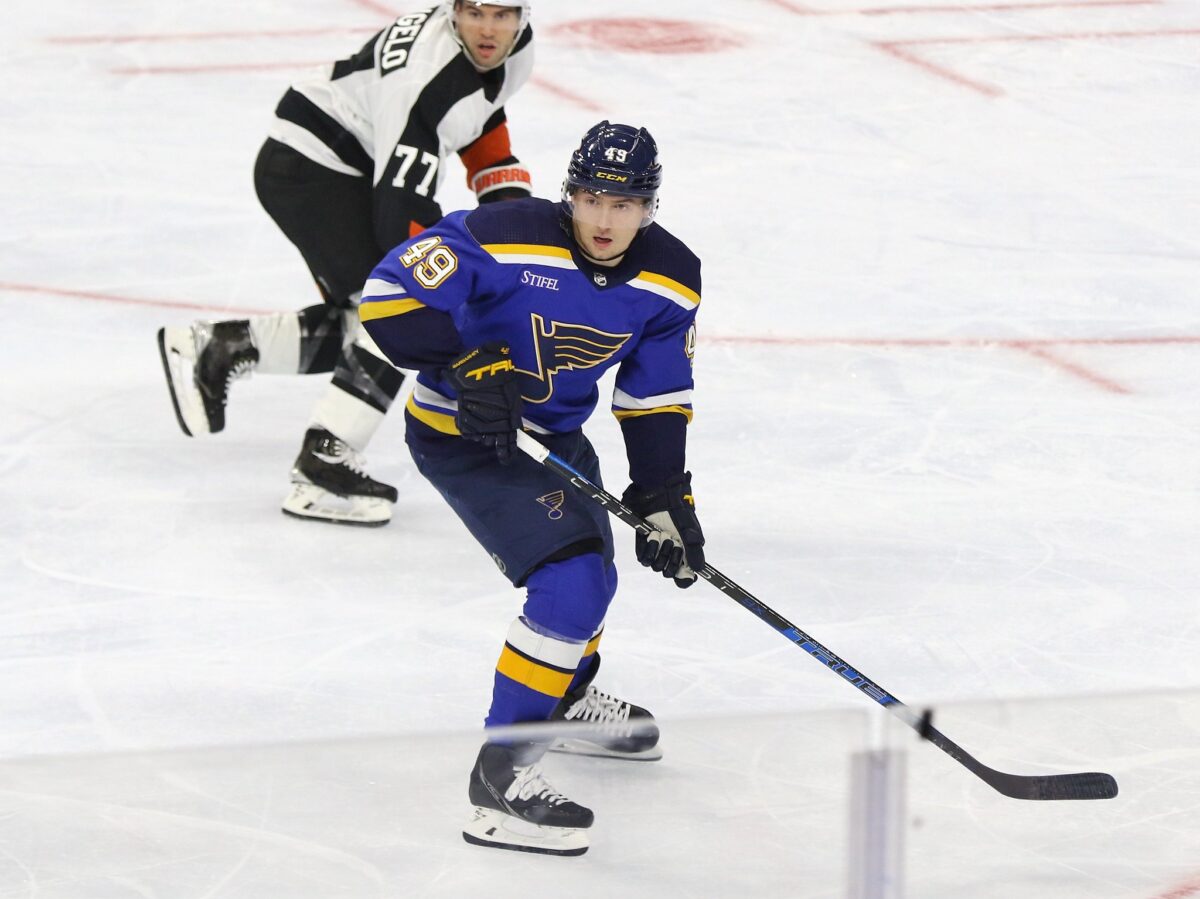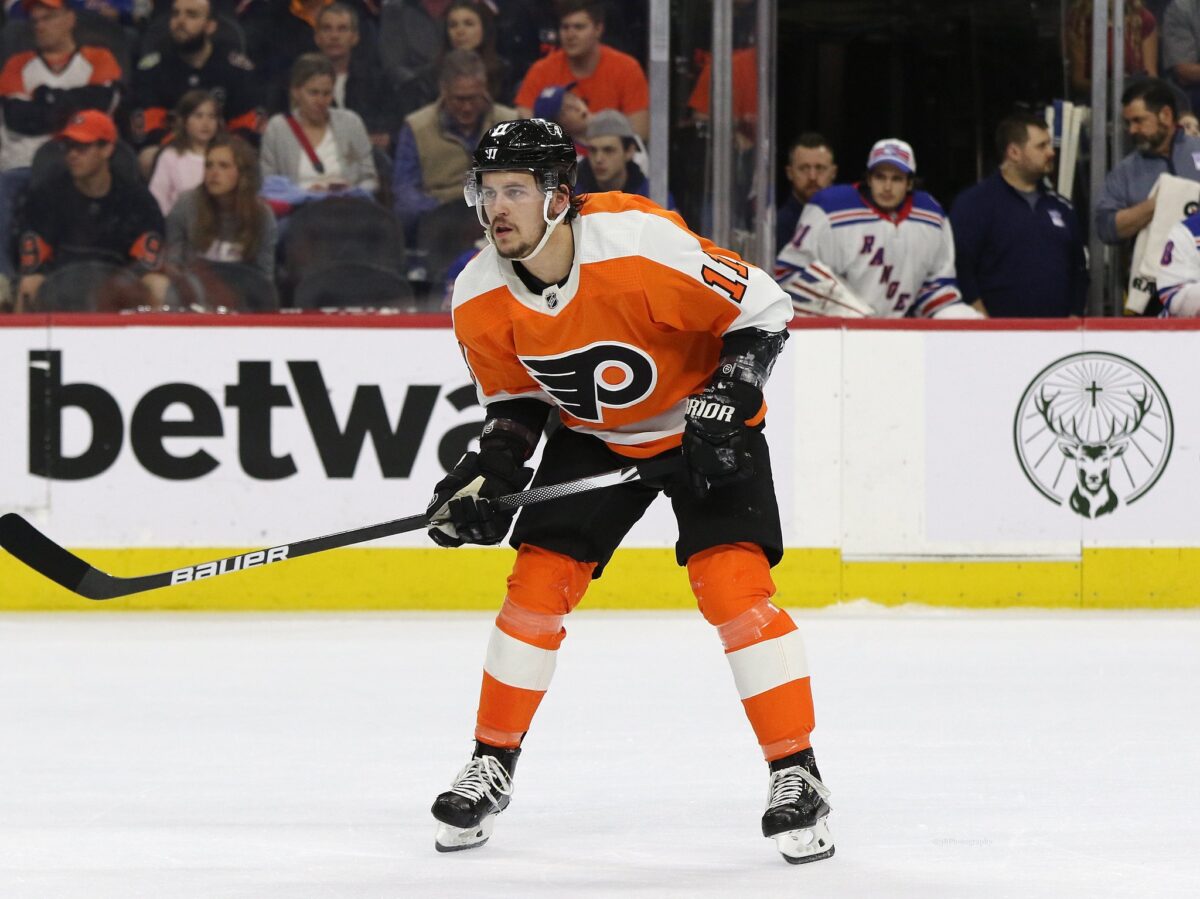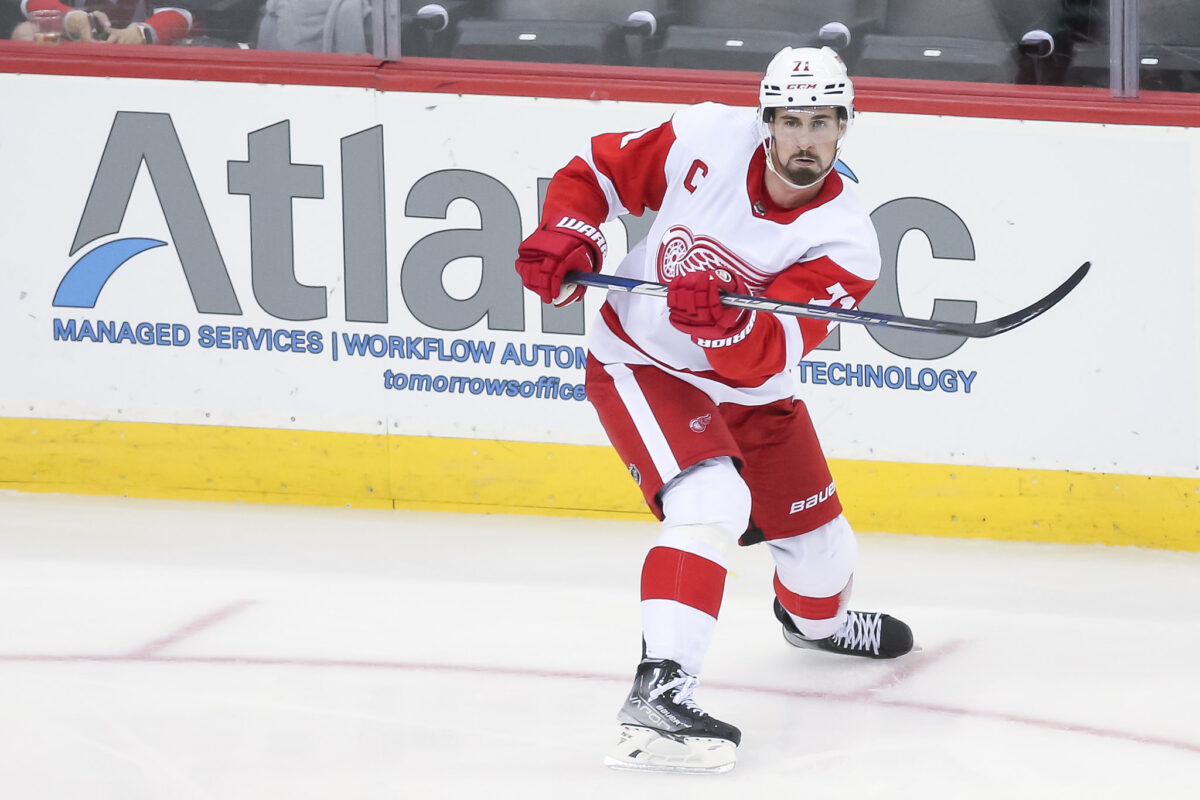The Colorado Avalanche find themselves in a favourable position to defend their 2022 Stanley Cup championship less than two weeks from the March 3 trade deadline. Given their well-documented battles with injuries this season, the team currently sits in a divisional playoff spot and within striking distance of the Central Division-leading Dallas Stars. Beyond the health concerns, the Avalanche have struggled with one particular roster issue.
Since Nazem Kadri opted to join the Calgary Flames as a free agent last summer, the Avalanche have grappled with how best to replace his production as the second-line center. Head coach Jared Bednar has rotated through a number of candidates, with J.T. Compher, Alex Newhook, and Evan Rodrigues all making their case to be the permanent secondary pivot. Heading into the trade deadline, addressing this uncertainty should be management’s top priority.
However, the extent of Erik Johnson’s recent injury likely dictates how the Avalanche navigate the trade deadline. If he’s out for the remainder of the regular season and remains on long-term injured reserve (LTIR), the Avalanche can exceed the salary cap by the same amount as Johnson’s cap hit ($6 million). If not, they would likely turn towards more of the cheaper, affordable names on the market.
Related: Avalanche’s Top 5 Trade Assets at the 2023 NHL Trade Deadline
As for what the Avalanche can offer in a potential trade, the organizational prospect pool is as barren as it’s ever been in the Joe Sakic-Chris MacFarland era, although last season’s Stanley Cup win proved to be well worth the investment. They still possess several appetizing prospects and draft picks to dangle in front of prospective suitors.
Even with a pair of intriguing center targets in Ryan O’Reilly and Bo Horvat off of the market in recent days and weeks, the Avalanche can choose from plenty of short- and long-term options to slide into the second-line role. Let’s dive in.
Adam Henrique, Anaheim Ducks
2022-23 Statistics: 55 Games Played (GP) – 19 Goals (G) – 14 Assists (A) – 33 Points (PTS) – 18:22 Average Time On Ice (ATOI)
Much of Adam Henrique‘s trade appeal comes from the relatively affordable average annual value (AAV) attached to his contract, with the veteran center owed just over $5.8 million through the end of next season. As I mentioned earlier, having Johnson sit on LTIR for the rest of the regular season would offer MacFarland increased flexibility when it comes to fitting in any newcomers and adding more than just a single top-six forward.

On the ice, Henrique’s offensive production and relative possession numbers suggest he hasn’t been weighed down by the Anaheim Ducks’ scant roster and subsequently dreadful on-ice performance. The 33-year-old is scoring at a 28-goal, 49-point pace while ranking third among the team’s forwards in average ice time, including logging over two minutes a game on both the powerplay and the penalty kill.
At 5-on-5, he ranks third or higher among the team’s forwards in terms of how well the Ducks fare in controlling shots, scoring chances, expected goals, and high-danger chances when he takes the ice compared to when he’s on the bench. Considering the 2022-23 Ducks currently own the lowest single-season 5-on-5 expected goals share since the stat has been recorded (2007-08) at 39.3% according to Evolving Hockey (by design I might add), that’s a downright miracle.
Related: NHL Trade Bait List for the 2023 NHL Trade Deadline
He doesn’t boast much in the way of playoff experience (only four postseason appearances since 2012), but a young Avalanche core just proved they’re not lacking in that department. Further, pairing an aging Henrique with aggressive, puck-carrying wingers such as Artturi Lehkonen and Valeri Nichushkin would relieve him of forechecking and zone-transition duties where he admittedly grades out below league average according to Corey Sznajder’s tracking data.
Although it likely costs an additional draft pick or two, having both the Anaheim Ducks and an undefined third team retain salary (up to 50 percent each) gives the Avalanche the room to upgrade and bolster the lineup elsewhere. Given the clear roster need, the related cap constraints, and available assets on hand, the versatile Henrique appears to be the likeliest player to join the Avalanche for their Cup defence this spring.
Ivan Barbashev, St. Louis Blues
2022-23 Statistics: 54 GP – 10 G – 18 A – 28 PTS – 16:15 ATOI
With St. Louis Blues general manager (GM) Doug Armstrong auctioning off O’Reilly, Noel Acciari, Vladimir Tarasenko, and Niko Mikkola in recent days, pending unrestricted free agent (UFA) center Ivan Barbashev could be the next name to change locales. Given that the 27-year-old’s contract dictates that he’s only owed $2.25 million this season (before further salary retention), he represents one of the most cost-effective options on the market.
Although Barbashev’s 26-goal, 60-point output last season appears to be a product of the Blues’ unsustainable teamwide finishing rate, his true talent lies somewhere between that clip and this year’s 42-point pace. Barbashev has seen his 5-on-5 on-ice shooting percentage (OiSH%) drop from 12.2% last season to 8.4% this season which, despite being closer to his previous career average, partially explains his diminished counting stats.

Sznajder’s tracking data suggests that he’s able to generate zone entries with possession at an above-average rate and is one of the league’s most aggressive forecheckers, two traits that would fit seamlessly within the Avalanche’s current system. He carries a positive penalty differential in all situations (plus-4) so he’s not hurting his team with his aggressiveness and active feet.
Barbashev can also play across the forward line but his diminished scoring and relatively low usage (eighth among Blues forwards in all-situations ice time) don’t emphatically suggest that he’s a clear upgrade on what the Avalanche already have down the middle. He’s a capable, if mildly underwhelming last-ditch option if MacFarland strikes out on their other targets, but he doesn’t move the needle significantly enough for the Avalanche to part ways with their already limited asset base.
Travis Konecny, Philadelphia Flyers
2022-23 Statistics: 50 GP – 26 G – 25 A – 51 PTS – 20:09 ATOI
Although 25-year-old Travis Konecny is still under contract at a $5.5 million AAV through the 2024-25 season, the floundering Philadelphia Flyers could be incentivized to sell if the organization pivots towards a full-scale rebuild. The Flyers sit 25th overall in the NHL and own a worse points percentage (PTS%) than the Blues who have clearly committed to a retool of some kind, although they’ve focused on trading pending UFAs rather than players with term.

Beyond Konecny’s point-per-game production, his underlying numbers clearly demonstrate why ambitious contenders would love to obtain him at the deadline. He leads Flyers forwards in both shots and shot assists per 60 minutes at 5-on-5, ranks seventh leaguewide in high-danger shot assists, generates high rates of both rush and cycle offence, and is one of the most effective forecheckers in the league.
That’s before mentioning he ranks first or second among Flyers forwards in all situations, even strength, powerplay, and shorthanded ice time. He wouldn’t be leaned on as heavily with the Avalanche which would allow him to feast on weaker competition alongside stronger linemates.
You may also like:
- Colorado Avalanche Won’t Be Contenders This Season
- Colorado Avalanche Lineup Projection for 2024-25
- Avalanche Giving Nikolai Kovalenko a Chance to Prove Himself
- 3 Avalanche Players With the Most to Prove in 2024-25
- Peter “Foppa” Forsberg: A Biography
Konency has drawn 28 minor penalties this season (tied for fourth among forwards) and although he gives some of that back with his aggressiveness (21 taken this season), that’s a bonus for a team rolling out a merciless power play when healthy.
Konency’s bargain of a contract and a career year in the making should send his acquisition cost skyrocketing and could force the Avalanche out of the bidding, but he’d be a perfect short- and long-term fit for the organization.
Dylan Larkin, Detroit Red Wings
2022-23 Statistics: 53 GP – 21 G – 34 A – 55 PTS – 19:51 ATOI
Trading for Detroit Red Wings’ captain Dylan Larkin is a longshot given the potential acquisition cost and his desire to stay close to home, but there is a non-zero chance GM Steve Yzerman moves him at the deadline.
Larkin and Yzerman are engaged in an anxious tango over the pending UFA’s contract extension and both have differing opinions on the 26-year-old’s long-term value. Looking at recent positional comparables, it’s hard to argue Larkin isn’t deserving of a sizeable raise.
A pending UFA himself, Horvat immediately signed an eight-year extension with the New York Islanders worth $8.5 million per season after being traded by the Vancouver Canucks and since Larkin is nearly 16 months younger and boasts a higher career point-per-game rate (0.74 compared to Horvat’s 0.68), his number likely starts at $8.5 million.
The Islanders also signed Mat Barzal, who is both younger and more productive over his career than Larkin, to an extension worth $9.15 million a season. Larkin can feasibly argue he should earn something within that ballpark.

Yzerman has famously battled with a franchise center in contract talks before so the current predicament doesn’t come as much of a surprise, but it opens up the possibility that Larkin hits the open market. He holds the leverage and his $6.1 million AAV can be absorbed by the Avalanche with relative ease assuming Johnson remains on LTIR, but the Red Wings are only a few points back of a wildcard spot with games in hand.
The likelihood of a trade depends on if the Red Wings fall out of the playoff race in the next two weeks and if it becomes apparent Larkin and Yzerman can’t find a compromise. As a result, don’t expect the center to be traded until closer to the deadline, if at all. The Avalanche may not be able to cobble together the most attractive package either in the event Larkin becomes available, nor have the two been connected, but the organization is no stranger to seismic trades.
Even if the Avalanche acquire Larkin solely as a short-term rental, his production and electric transition play would give the team a significant shot in the arm heading into the playoffs. Keep an eye on this situation moving forward.
Avalanche Have Several Center Options at the 2023 Trade Deadline
Beyond the four listed names, the Avalanche could also target one or more of the following players at the upcoming trade deadline to address either their short- or long-term needs at center:
- Sam Bennett, Florida Panthers
- Sam Reinhart, Florida Panthers
- Jonathan Toews, Chicago Blackhawks
- Nick Schmaltz, Arizona Coyotes
- Max Domi, Chicago Blackhawks
As has become readily apparent, the Avalanche should have a plethora of options at center in the days leading up to the trade deadline. MacFarland’s willingness to deplete the organization’s shallow future asset pool likely determines how big of a swing the team ultimately takes on or before March 3. Regardless of which avenue they choose, things are brewing in Colorado.
Data courtesy of AllThreeZones, Evolving Hockey, Natural Stat Trick, and the NHL. Statistics are accurate as of Feb. 18.